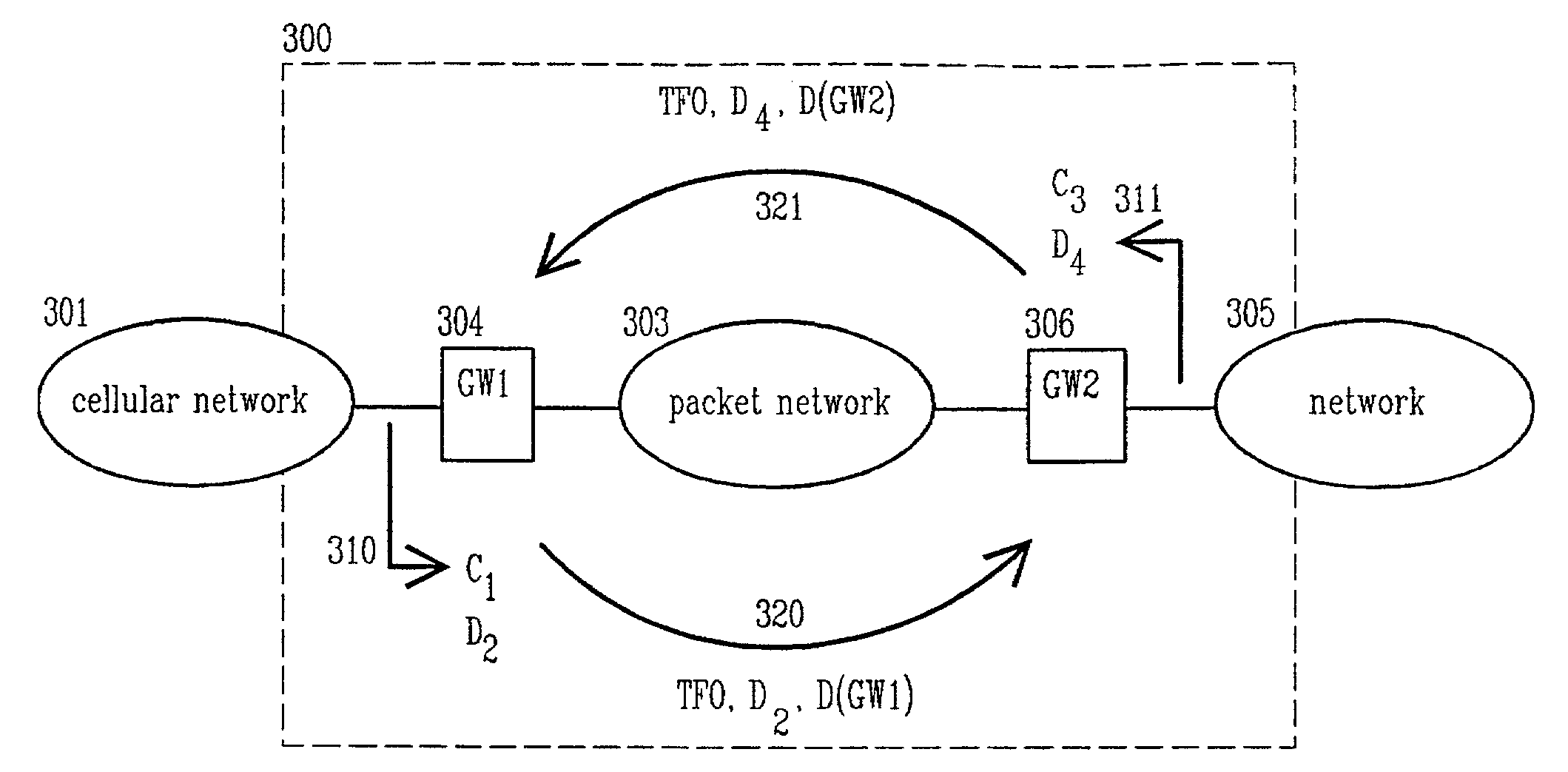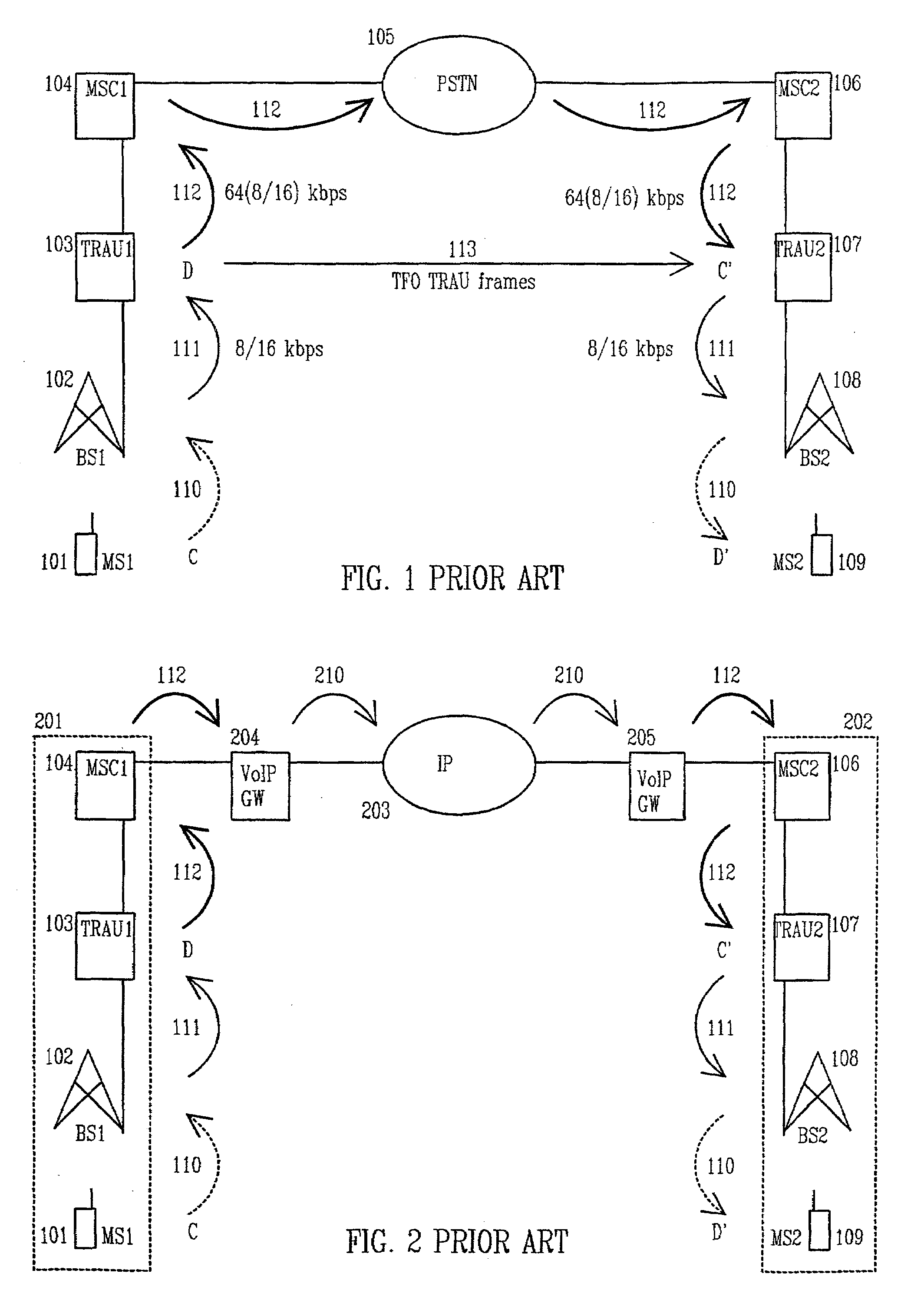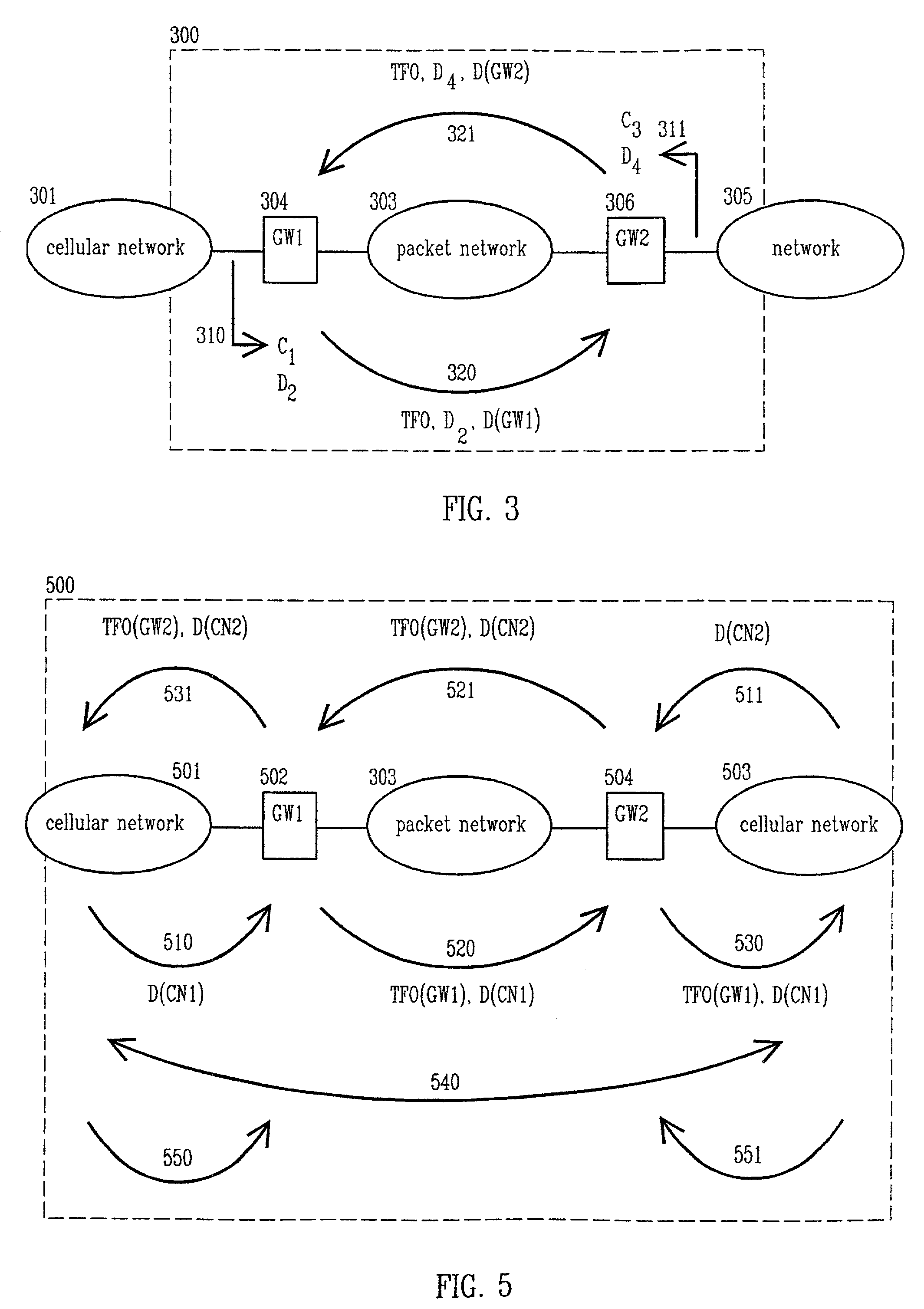Method for transmitting coding information over packet data network
- Summary
- Abstract
- Description
- Claims
- Application Information
AI Technical Summary
Benefits of technology
Problems solved by technology
Method used
Image
Examples
Embodiment Construction
.
[0067]FIG. 3 presents a method 300 according to a first preferred embodiment of the invention where information about the decoding capabilities and TFO capabilities on a first side of the packet network is transmitted to the other side of the packet network. One of the networks connected to the packet network is a cellular network. Data about decoding capabilities of the cellular network is established by monitoring the TFO frames. This method is applicable to, for example, the GSM network and TFO TRAU frames.
[0068]The cellular network 301, where a tandem free operation capable coding-decoding unit 302 is involved in the connection, is connected to the packet network 303. A gateway GW1304 may be used to connect the cellular network 301 to the packet network 303. On the other side of the packet network there is another network 305, which is connected to the packet network, for example, with the gateway GW2306.
[0069]On the edges of the packet network, for example in the gateways, cer...
PUM
 Login to View More
Login to View More Abstract
Description
Claims
Application Information
 Login to View More
Login to View More - R&D
- Intellectual Property
- Life Sciences
- Materials
- Tech Scout
- Unparalleled Data Quality
- Higher Quality Content
- 60% Fewer Hallucinations
Browse by: Latest US Patents, China's latest patents, Technical Efficacy Thesaurus, Application Domain, Technology Topic, Popular Technical Reports.
© 2025 PatSnap. All rights reserved.Legal|Privacy policy|Modern Slavery Act Transparency Statement|Sitemap|About US| Contact US: help@patsnap.com



